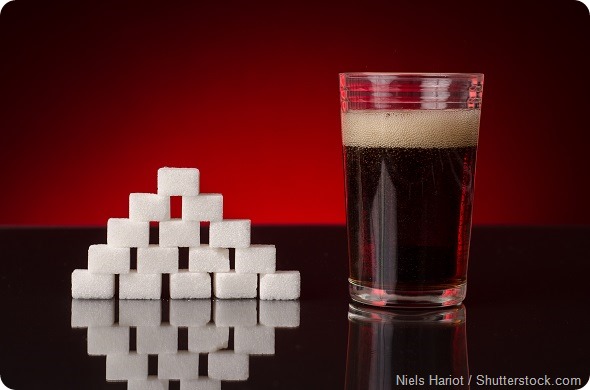The Affordable Care Act includes laws to help the public know the nutritional value of the food they buy. Consequently, larger chain restaurants will be required to indicate the calories count next to items on their menus. However, a study published yesterday suggests that this may not be the best way to encourage healthier eating habits.

Signs showing how many miles would need to be walked in order to use up the calories in sugary drinks were more effective in altering buying habits than signs stating the calorific value. Sara Bleich, study author, explained,
People don’t really understand what it means to say a typical soda has 250 calories...our research found is that when you explain calories in an easily understandable way such as how many miles of walking needed to burn them off, you can encourage behaviour change.
The study installed brightly coloured signs (8.5x11 inches) at six corner shops in low-income areas of Baltimore for 6 weeks at a time. The signs presented the energy content of bottles of soft drinks in one of four ways: the number of calories in each bottle (250); the equivalent number of teaspoons of sugar (16); the duration of running required to used it up (50 minutes); or the distance required to walk it off (5 miles). The team observed over 3,000 drink purchases in the stores by (predominately black) adolescents aged 12–18 years, and interviewed a quarter of them about whether they saw and understood the signs. Just over a third of those questioned said they had seen the signs; 59% believed what they read and 40% changed their behaviour as a result. Those who swapped to buying a healthier drink continued to do so for several weeks after the signs were taken down.
The percentage of sugary beverages purchased overall in the stores fell from 98% before the signs were installed to 89% afterwards. The sign that led to the greatest reduction in sugary drink purchases was the one saying it would take a 5-mile walk to burn off the calories. Whilst this sign was displayed the number of sugary drink calories purchased fell from 203 to 179 calories.
Bleich commented,
..there is a strong scientific link between consumption of sugary beverages and obesity. Using these easy-to-understand and easy-to-install signs may help promote obesity prevention or weight loss.
The researchers concluded that simply showing calorie counts isn’t enough to deter unhealthy eating habits. Thus, policymakers may need to rethink how nutritional information is communicated.
Further reading
Bleich SN, et al. Diet-Beverage Consumption and Caloric Intake Among US Adults, Overall and by Body Weight. American Journal of Public Health. 2014;104:e72-e78. Available at: http://ajph.aphapublications.org/doi/abs/10.2105/AJPH.2013.301556?journalCode=ajph
Source:
Journal reference:
Bleich SN, et al. Reducing Sugar-Sweetened Beverage Consumption by Providing Caloric Information: How Black Adolescents Alter Their Purchases and Whether the Effects Persist. American Journal of Public Health. 2014; e-Pub Ahead of Print. Available at: http://ajph.aphapublications.org/doi/abs/10.2105/AJPH.2014.302150